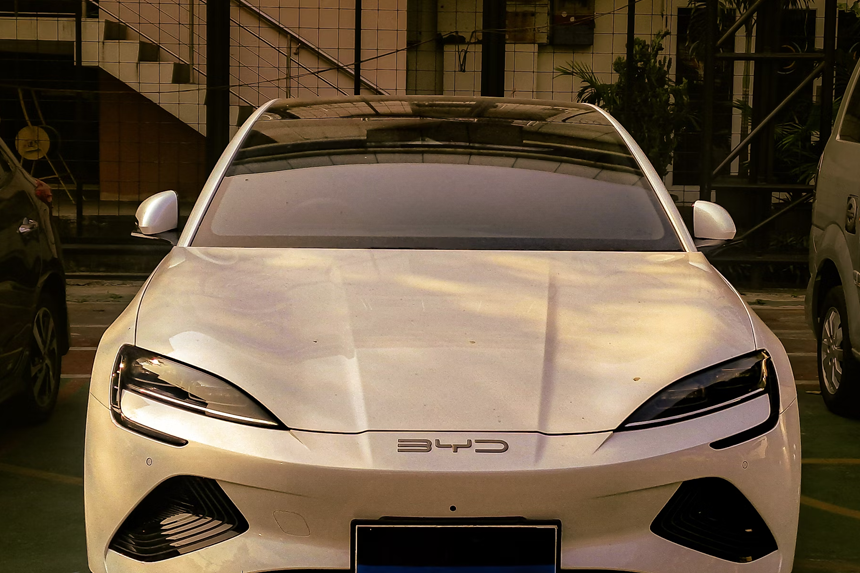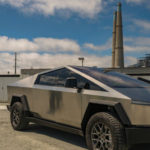BYD, the Chinese electric vehicles (EV) giant, is accelerating its bid to overtake Tesla as the world’s leading EV maker. In December alone, the company sold an impressive 207,734 EVs, capping a stellar year with a total of 1.76 million sales. This remarkable performance was fueled by subsidies, discounts, and a fiercely competitive domestic EV market.
How Close Is BYD to Catching Up with Tesla?
Tesla, the dominant EV maker, will shortly announce its quarterly sales figures. While it maintained a slim lead over BYD in the previous quarter, the Shenzhen-based automaker has been steadily closing the gap.
“BYD’s growth trajectory is a clear sign that the global electric vehicles market is entering a new phase,” said an industry analyst. “Competition is no longer a two-horse race between Tesla and legacy automakers; Chinese brands are making their presence felt.”
In the third quarter of 2024, BYD reported revenue of more than 200 billion yuan ($28.2 billion)—a 24% increase year-on-year—surpassing Tesla’s $25.2 billion for the first time. However, Tesla still sold more EVs than BYD, showcasing its global reach.
Why Is BYD Dominating the Domestic EV Market?
BYD’s success is rooted mainly in its home market, where 90% of its vehicles are sold. In 2024, the company’s total vehicle sales soared by over 41%, driven primarily by hybrids. The surge reflects a combination of government subsidies and intense competition that has slashed prices, making electric vehicles more accessible to Chinese consumers.
“Chinese buyers are increasingly drawn to energy-efficient options, and government policies are a major factor,” noted a BYD spokesperson.
This robust domestic demand has allowed BYD to extend its lead over foreign brands like Volkswagen and Toyota, which have struggled to keep up in the competitive EV market.
What Challenges Are Legacy Automakers Facing?
The rise of BYD and other Chinese electric vehicle manufacturers contrasts sharply with the difficulties established carmakers face in Western markets.
Last month, Honda and Nissan confirmed ongoing merger discussions to counteract mounting pressure from their Chinese competitors. Meanwhile, Volkswagen announced an agreement with the IG Metall trade union, avoiding immediate plant closures in Germany. However, the company warned that cost-cutting measures remain critical.
Volkswagen isn’t alone in facing challenges. Earlier in December, Carlos Tavares, CEO of Stellantis, abruptly resigned following a boardroom conflict. The automaker—owner of brands like Vauxhall, Jeep, Fiat, and Peugeot—had recently issued a profit warning, further highlighting the turbulence within the traditional EV market.
How Is BYD Faring in Global Markets?
While BYD continues to expand its footprint beyond China, it faces significant hurdles. In October, the European Union imposed up to 45.3% tariffs on Chinese-made electric vehicles, aiming to protect its domestic industries. Similarly, the United States has slapped a 100% duty on EV imports from China, with President-elect Donald Trump expected to implement additional tariffs.
Despite these challenges, BYD has made inroads in emerging markets. However, its efforts hit a snag in Brazil, its largest overseas market. Authorities halted construction of a BYD factory in December, citing worker conditions likened to “slavery.”
“We have terminated our relationship with the construction firm involved and remain fully committed to compliance with Brazilian legislation,” said a BYD representative.
Who Will Lead the EV Market in the Future?
BYD’s meteoric rise underscores the shifting dynamics of the global automotive industry. As competition intensifies, the battle for dominance in the electric vehicles sector is set to reshape the EV market landscape. Tesla, BYD, and many other players are racing toward the same goal: to lead the transition to electric mobility.
“2024 has been a pivotal year for the EV market,” remarked an auto industry expert. “As BYD and Tesla continue to trade places on key metrics, the ultimate winner will be the consumer.




